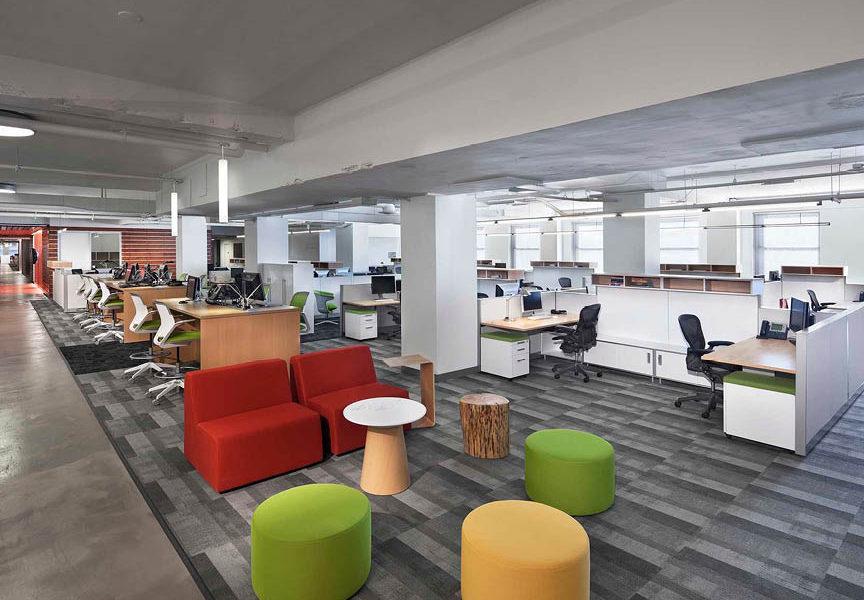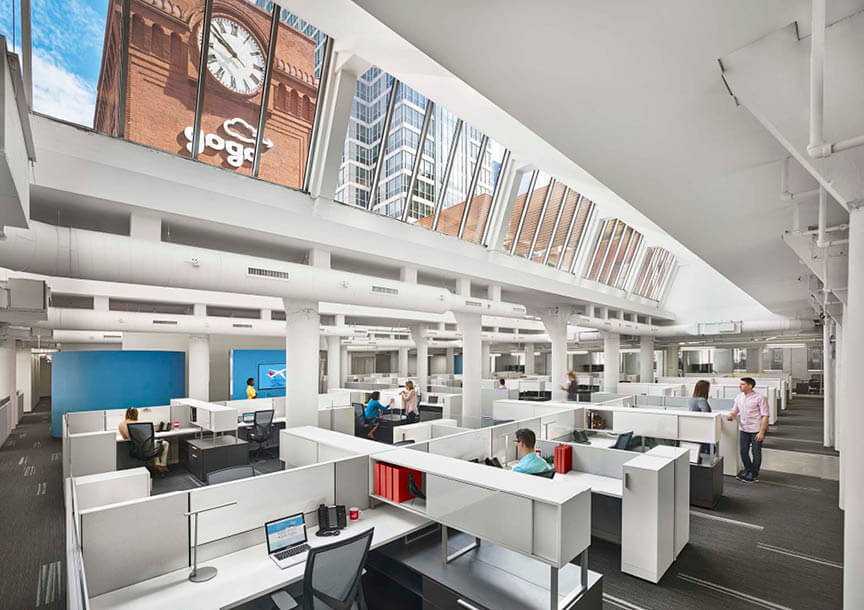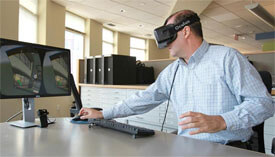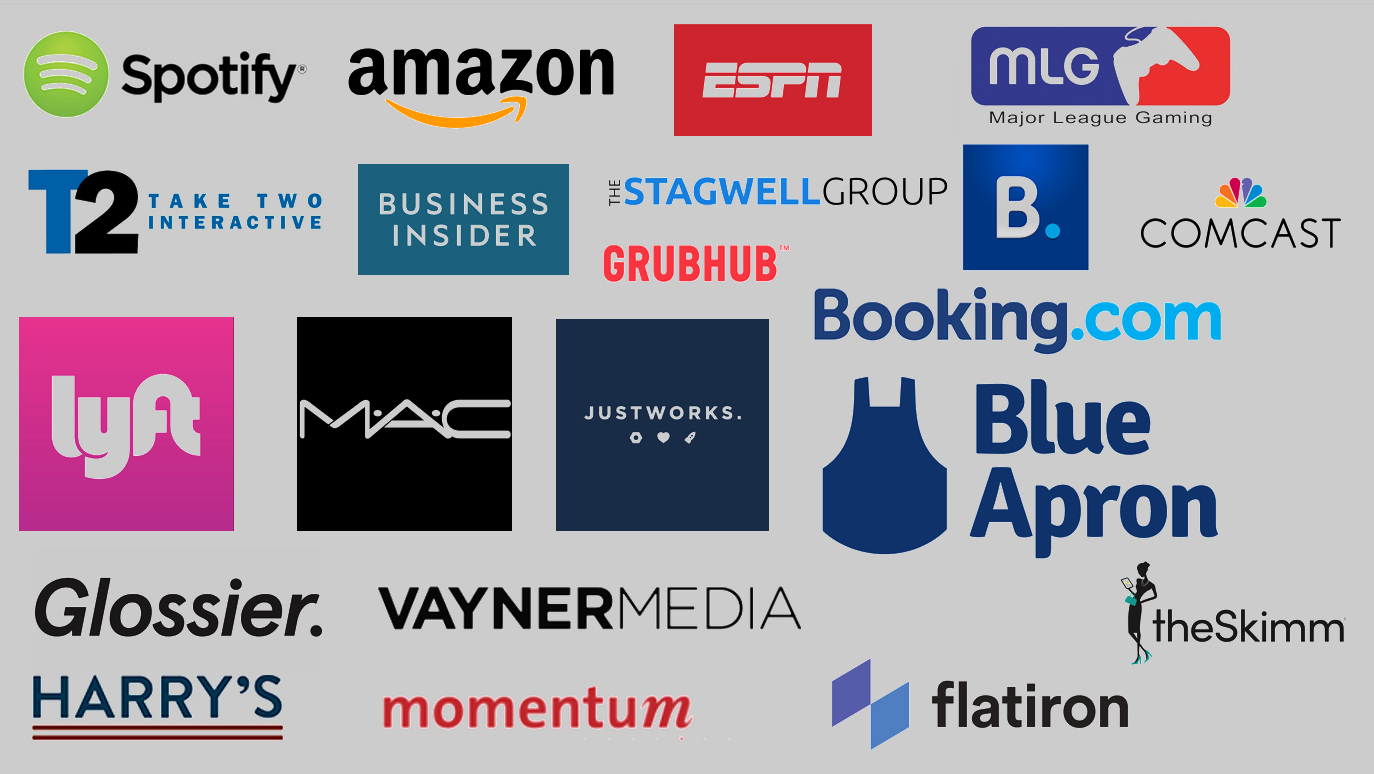
How virtual reality is changing the way tenants view office space.
It’s no surprise we are asked if the tech drive is affecting the real estate market in Chicago and we can always provide data that it is. But instead I want to touch on how tech is affecting the commercial real estate (“CRE”) process in general. From seamless video conferencing to building information modeling, technology has impacted how and where business is conducted in the CRE community. And now it’s safe to say virtual reality will be no exception. By 2025, the virtual and augmented reality market is expected to be valued at $80B – roughly the size of the desktop PC market today – according to a study by Goldman Sachs. Real estate is projected to capture a $2.6B share of that market, all driven at potential opportunities to save time and cost in the CRE process.
Virtual reality offers building owners and property managers a more cost-effective option than the usual cost of construction and lead time required for build out scenarios. Landlords now have the option to build a model office digitally, effectively streamlining the delivery process. These presentations will aim to deliver the same visual value to prospective tenants, saving costs and lead times associated with these projects. The number of pre-built suites may be reduced significantly.

Example of a Rendering
With the opportunity to experience a visual representation of an office space well before a lease is inked by the tenant, there is less room for error at the ’11th hour.’ The model will effectively eliminate potential miscommunication and many of the unforeseen design and construction complications, reducing overall project costs. It’s expected to result in increased tenant satisfaction, reduced man hours, and a greater confidence that the chosen space is the right fit.
We recently partnered with Rightsize in Chicago using one of their space visualization tools, VisionFX. We were able to combine layout, design, and product selections into the interactive 3D platform, allowing us to visualize what the tenant’s space would look like when the build-out was complete. With the ability to see the intended furniture, fixtures and equipment together, we were able to virtually make changes to select finishes before anything was ordered, resulting in a more efficient approach. Gone are the days we used duct tape to outline offices, or walking the raw floor with drawings and renderings hoping to visualize the end product.
Happy to answer any questions or follow up on any of the above.
tags:
category:
recent posts:
Recent Posts
New York City Office Space Timeline
How long does it take to lease commercial real estate in New York City? The TechOfficeSpaces.com Team is often asked how long it takes to move into new office space…
Yelp Signs Lease at Terrell Place in Gallery
Company Plans for 500 New Hires, Will Move Into 52,000 SF Later This Year Huge news to hit the wire this week. Yelp, the San Francisco-based tech giant specializing…
Year in Review – The Largest Office Relocations
2017 was a solid year for New York City commercial office leasing. Though the crystal ball for the future of Manhattan’s office market is a bit cloudy at the moment,…




 CITIES
CITIES CATEGORIES
CATEGORIES CONTACT
CONTACT about us
about us 212-326-1000
212-326-1000 find your space
find your space